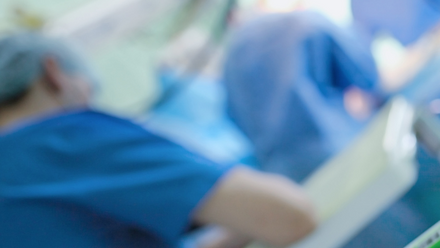Pulse oximetry and ethnicity – the time to act is now
The pulse oximeter is an essential device used daily in intensive care units in both the diagnosis and management of hypoxaemia. Oxygen is a treatment administered to patients to maintain oxygen saturations (SpO2) within narrow target ranges; the importance of this cannot be overstated as, in the critically unwell patient, both hypoxaemia and hyperoxaemia have been associated with harm (1,2). It is imperative that pulse oximeters maintain a high degree of accuracy, both within and between patients.
The problem
Thirty years ago, it was recognised that SpO2 measurements were less accurate when pulse oximeters were used in patients with darker skin pigmentation (3), and research in the 2000s confirmed this (4, 5). The most recent is a study in the New England Journal of Medicine, which shows a threefold increase in the incidence of occult hypoxaemia in Black patients compared to white patients (6). This has led to statements from the American Food and Drug Administration (FDA) and the Medicine and Healthcare Regulatory Authority (MHRA), calling for increased vigilance when pulse oximetry is used in these populations (7,8).
The potential damage
So far, these errors in pulse oximetry have not been directly associated with any increased harm, however, absence of evidence is not evidence of absence. The recent COVID-19 pandemic has demonstrated an increased mortality in people of Black origin (9) and erroneous pulse oximetry measurements cannot be ruled out as a contributory factor.
Potential Solutions
There have been calls for clinicians to be ‘aware’, and monitor trends in saturations rather than individual values. However, this adds an extra cognitive load to the already complex management of critically unwell patients. Furthermore, such calls to be ‘aware’ or ‘vigilant’ come with relatively little practical advice and are at risk of causing a systematic difference in the standard of care provided to Black patients. The use of arterial blood gases as an alternative method of assessing oxygenation has been suggested. However, this is an invasive procedure and not without risk, that adds to the overall burden of treatment for individual patients (10).
A clarion call from societies and industry
The Intensive Care Society believes that all the equipment we use simply must be appropriately validated across the spectrum of patients we care for. We call for:
- Industry to test their current pulse oximeters across a diverse population, and report results openly and transparently. There is evidence that the degree of erroneous measurement varies between devices (10).
- Industry to firmly and publicly commit to a future which ensures maximum accuracy for all patients. The ability to improve pulse oximetry accuracy in various groups has already been demonstrated (11).
- Healthcare organisations and manufacturers to commit to only using medical devices of any kind after they have been shown to be accurate across a diverse population.
- Our colleagues and intensive care societies around the world to stand with us in demanding similar action, to ensure that the possibility of a patient coming to harm due to a device error is minimised as much as possible.
Life for patients in intensive care is already precarious. We deliver treatment to the sickest in the hospital, and where we do succeed, it is often after a series of marginal gains. Put simply, the detail matters. In a time where a vaccine can be withdrawn due to a 7 per million risk of a rare side effect (12), it is essential that the same standard of care and diligence is applied here.
References
- Bellani G, Laffey JG, Pham T, et al. Epidemiology, Patterns of Care, and Mortality for Patients With Acute Respiratory Distress Syndrome in Intensive Care Units in 50 Countries. JAMA. 2016;315(8):788–800. doi: 10.1001/jama.2016.0291
- Girardis M, Busani S, Damiani E, et al. Effect of Conservative vs Conventional Oxygen Therapy on Mortality Among Patients in an Intensive Care Unit: The Oxygen-ICU Randomized Clinical Trial. JAMA.2016;316(15):1583–1589. doi: 10.1001/jama.2016.11993
- Jubran, A. & Tobin, M. J. Reliability of Pulse Oximetry in Titrating Supplemental Oxygen Therapy in Ventilator-Dependent Patients. Chest 97, 1420–1425 (1990).
- Bickler P, Feiner J, Severinghaus J. Effects of skin pigmentation on pulse oximeter accuracy at low saturation. Anesthesiology. 2005;102(4):715-719. doi: 10.1097/00000542-200504000-00004
- Feiner J, Severinghaus J, Bickler P. Dark skin decreases the accuracy of pulse oximeters at low oxygen saturation: the effects of oximeter probe type and gender. Anesth Analg. 2007;105(6 Suppl):S18-23, tables of contents. doi: 10.1213/01.ane.0000285988.35174.d9
- Sjoding M, Dickson R, Iwashyna T, Gay S, Valley T. Racial Bias in Pulse Oximetry Measurement. N Engl J Med. 2020;383(25):2477-2478. doi: 10.1056/NEJMc2029240
- Pulse Oximetry Accuracy and Limitations: FDA Safety Communication. https://www.fda.gov/medical-devices/safety-communications/pulse-oximeter-accuracy-and-limitations-fda-safety-communication
- MHRA. The use and regulation of pulse oximeters (information for healthcare professionals). https://www.gov.uk/guidance/the-use-and-regulation-of-pulse-oximeters-information-for-healthcare-professionals
- Richards-Belle A, Orzechowska I, Gould DW, Thomas K, Doidge JC, Mouncey PR, et al.; ICNARC COVID-19 Team. COVID-19 in critical care: epidemiology of the first epidemic wave across England, Wales and Northern Ireland. Intensive Care Med 2020;46:2035–204
- Farkas J. Dismantling the racial bias of pulse oximetry. https://emcrit.org/pulmcrit/racism-oximetry/
- NONIN Puresat Oximetry Technology provides superior accuracy in the most challenging environments. https://www.nonin.com/wp-content/uploads/2018/10/M-5407-Skin-Pigmentation-II-Tech-Bulletin-for-print.pdf
- Coronavirus (COVID-19) Vaccine adverse reactions. https://www.gov.uk/government/publications/coronavirus-covid-19-vaccine-adverse-reactions



